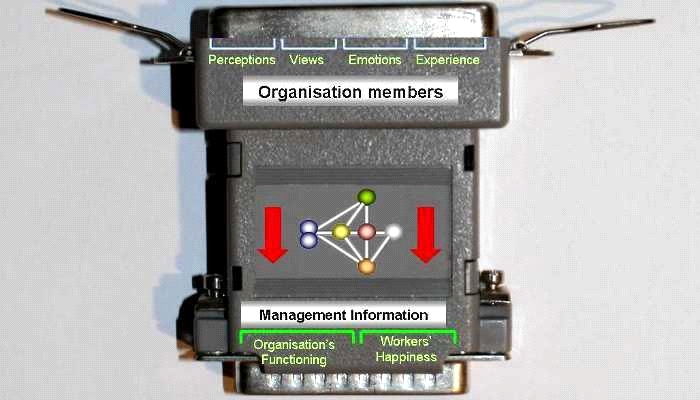 René Van Someren René Van Someren
5-D scans: What, Why, How?
Posted 16 October, 2019
See also: René Van Someren's blog.

The following is an attempt to briefly answer the question: “What are those 5-D scans?”
What: With our 5-D scans we collect data and convert that into clear, accessible (management) information. In other words: Business Intelligence.
Why: The purpose of this is to create better organisations and happier workers.
How: By better linking organisation members’ perceptions to clear, accessible managers’ input, we enable managers to make better decisions.
For whom: We focus mainly on end users who would rather not deal with statistics and technicalities, but who do wish to utilise the output of modern business intelligence and data analytics.
Groups rather than individuals: We focus mainly on group processes. Individual organisation members can function very differently than they do as a group. One could compare this to a choir. Each individual singer has certain qualities, which may differ enormously from the sound of all singers together. Group behaviour becomes more important as a manager’s span of control increases. Therefore, we tend to look at how groups tend to behave, why they do so and what managers can do to optimise their behaviour and well-being.
In this regard, one could also compare our 5-D scans to the functioning of a language translator, translating perceptions of organisation members into management indicators.
Examples: This information can be applied in many different ways, such as:
- in Strategic Management, to support the determination of an organisation’s Strengths, Weaknesses, Opportunities and Threats, as well as to help form strategies based on that determination;
- in Human Resource Management, to establish need for further development, (internal) mobility, reduce absenteeism and foster job retention and job satisfaction;
- in Change Management and Implementation Management, for baseline measurements and to evaluate results of implementations and of other interventions;
- in Leadership and Operational Management, to monitor organisational development, detect bottle necks and to identify and evaluate and control mechanisms;
- in Organisation Development, to help design organisational units, compose teams, provide suitable resources and create and implement suitable procedures;
- in Mergers & Acquisitions, as part of due diligence information, to help establish compatibility and to support and evaluate merge activities;
- in Education and Research, to learn about and demonstrate organisations’ functioning and effects of certain events and interventions.
Developments:
We have recently extended our basic 50-item EMQ to the proprietary 120-item COBQ (Comprehensive Organizational Behaviour Questionnaire). This is derived from various disciplines, such as sociology, social psychology, organisational psychology, anthropology, management science and political science, with the EMQ (Elementary Model Questionnaire) at its core. This extension help us provide even more, and more detailed management information.
Future developments:
We are currently working on automated reporting, which might even result in an integrated, user-friendly Business Intelligence application for end users (managers).
For more information about our 5-D organisational scan, please contact us.
René Van Someren’s personal website is: www.rene.vansomeren.org
René Van Someren's blog
|